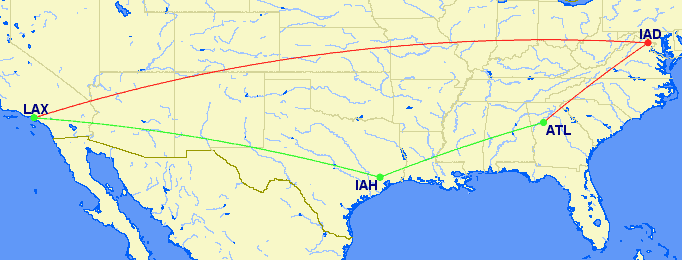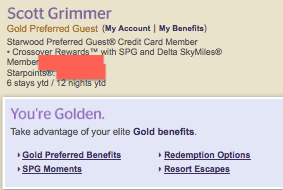MileValue is part of an affiliate sales network and receives compensation for sending traffic to partner sites, such as CreditCards.com. This compensation may impact how and where links appear on this site. This site does not include all financial companies or all available financial offers. Terms apply to American Express benefits and offers. Enrollment may be required for select American Express benefits and offers. Visit americanexpress.com to learn more.
Note: Some of the offers mentioned below may have changed or are no longer be available. You can view current offers here.
This post may contain affiliate links. Read my disclosure policy here.
This is the twenty-fifth post in a monthlong series that started here. Each post will take about two minutes to read and may include an action item that takes the reader another two minutes to complete. I am writing this for an audience of people who know nothing about frequent flyer miles, and my goal is that by the end, you know enough to fly for free anywhere you want to go.
Airlines and hotels offer elite status that rewards frequent travelers who are loyal to a single brand of airline or hotel. These perks can be incredibly valuable, or they can be not worth the time and money taken to earn them.
Airline status typically comes with better seats and fewer fees. Lower tier elites might get access to those extra-legroom seats in coach and a reduction in some fees. Top tier elites will get upgrades to first class on domestic flights, a few upgrades to business class on international flights, and waivers of change and cancellation fees.
Hotel status comes with freebies like late checkouts, free internet, free breakfast, suite upgrades, access to a club room, and more points per stay.
- How do you earn hotel status?
- How do you earn airline status?
- Is status worth chasing?
Basics Everyone Should Know
1. To earn airline status, you need to fly a certain number of paid miles or segments. Airline elite status starts at 25,000 paid miles flown in a year plus, on certain airlines, $2,500 spent on tickets.
2. You can credit paid, flown miles to an airline or one of its partners. Airlines are always partners with every member of their alliance and some non-alliance partners.
3. Airline elites get perks like priority check in, security, and boarding; seat upgrades; extra miles; waived baggage fees; dedicated customer service lines; waived award fees; waived change fees; and more.
4. To earn hotel status, you need to stay a certain number of paid nights or make a certain number of paid stays at a hotel chain. Or increasingly, you can receive status from carrying a credit card.
5. Hotel elites get perks like upgrades, late checkout, free internet, access to club rooms, priority check in, and extra points.
Let’s look at some travel profiles and basic elite program suggestions.
Very Frequent Traveler: 100k paid miles flown and 25 hotel stays per year
The more you travel the more status benefits are worth to you and the easier they are to obtain. One of the truisms of status is that you are better off having one top tier status than two mid tier statuses.
That means that instead of flying 50,000 miles on American Airlines and 50,000 miles on United, fly 100,000 on one to earn top tier status. 50,000 mile levels may earn a few seat upgrades and waived fees, but the 100,000 mile level will mean nearly automatic upgrades domestically and upgrades to flat beds on a few international flights a year.
Focusing also means instead of earning Hyatt Platinum AND SPG Gold to earn Hyatt Diamond OR SPG Platinum.
As a very frequent traveler, you will naturally earn statuses. Your main concern needs to be to consolidate a few top tier statuses instead of a bunch of low- and mid-tier statuses.
Your main value question: is it worth the extra money to maintain complete loyalty to unlock the top tier of loyalty at one airline and one hotel?
Frequent Traveler: 25k to 100k paid miles flown and 5-25 hotel stays per year
This is a big range of travel. At this level, you will earn some status, but not top tier status naturally.
The basic strategy for people in this range is still going to be to focus on staying with one hotel chain and flying one airline and its partners.
The basic question will be: is it worth the extra money to mileage or mattress run to earn the next tier of status?
Mattress running is booking a cheap hotel room you don’t need to earn stays, points, and status.
Mileage running is booking cheap flights that you fly not to reach the destination but to earn miles and status.
If you are close to the next tier of status, it might be worth your time and money to mattress or mileage run.
If you’re not that extreme, you may still be able to make minor tweaks to get to the next status level. Maybe you can break a two night stay at one hotel into two one-night stays at nearby hotels in the same city to double your stay credits.
Or maybe you can route in a slightly longer way to earn more airline miles. For instance Los Angeles to Dulles to Atlanta roundtrip will earn 1,500 extra miles roundtrip compared to connecting in Houston.

One final tip for people at the bottom of this range: You can credit both miles flown on American Airlines and miles flown on Delta to Alaska Airlines. Earning bottom tier status on Alaska at 25,000 miles combined on those partners will earn benefits on American, Delta, and Alaska flights.
Infrequent Traveler: Less than 25,000 paid miles flown and fewer than five paid hotel stays per year
Don’t chase status! It’s that simple. You don’t travel enough on paid itineraries to make status all that valuable, and you can easily get some hotel statuses and mimic airline status.
When you do fly, you can mimic many of the benefits of bottom tier status by getting an airline credit card. For instance, the United Explorer Card comes with a free checked bag, priority boarding, and extra award space normally set aside for United elites.
And you can exceed the benefits of top tier status on international flights by redeeming your miles for business and first class itineraries. Flying beds, first class lounges, and chauffeur service are available to anyone with enough miles.
For hotels, there are a number of ways to get status from credit cards and free sign ups.
You can get automatic Hilton Gold status as well as two free weekend nights at almost any Hilton worldwide by signing up for the Citi® Hilton HHonors™ Reserve Card.
You can get free SPG Gold status if you hold any American Express Platinum card.
Bottom Line
The bottom line on status is that the system is designed pretty well to reward frequent travelers–the exact travelers who will get the most use from status–with the biggest benefits.
There are smart things you can do to improve your status, like not splitting your paid travel among many hotels and airlines unnecessarily, but my main advice to most people is: don’t worry about earning status.
You’ll naturally earn status if you’re traveling a lot, and if you’re not, status isn’t worth much.



I fly about 50k a year domestic and did most of it on Continental back in the day.
My Continental and United mileage combined when they merged and now I’m at close to 800k Lifetime flight miles on United.
At one million miles, my spouse and I will be Gold for life. I’m 50 now. That’s another four years at 50k.
What’s the best way to get there faster without breaking the bank in expensive flights?
You can scour the Mileage Run Forum on FlyerTalk for cheaper flights, but you’re going to have to buy 200k more miles worth of paid flights ($10k worth if you find really cheap flights!) –> https://milevalu.wpengine.com/free-first-class-next-month-using-the-flyertalk-mileage-run-deals-forum-to-find-cheap-flights-and-mistake-fares/
I know it feels like you’re close, but is $10k worth the benefits of United Gold for an occasional flyer? Heck no!
Or for one $768 flight u could earn *G status for life, or until A3 changes it’s rules…
I’m aware of that trick, and it’s an interesting novelty, but…
Sounds like a terrible deal for most people honestly. Don’t forget the cost of the wasted time of flying that flight if you don’t want to fly it. I’d be interested in reading a defense of why that was a good deal for infrequent travelers.
I am not aware of the trick and didn’t totally understand the post.
[…] on the card in a calendar year moves up to Diamond Status. The Delta Reserve card offers 15,000 Medallion Qualifying Miles for spending $30,000 in calendar year and another 15,000 MQM for spending $60,000 […]